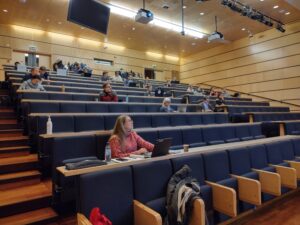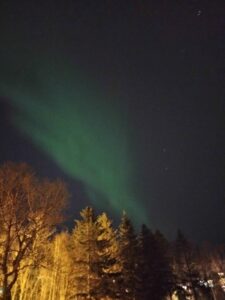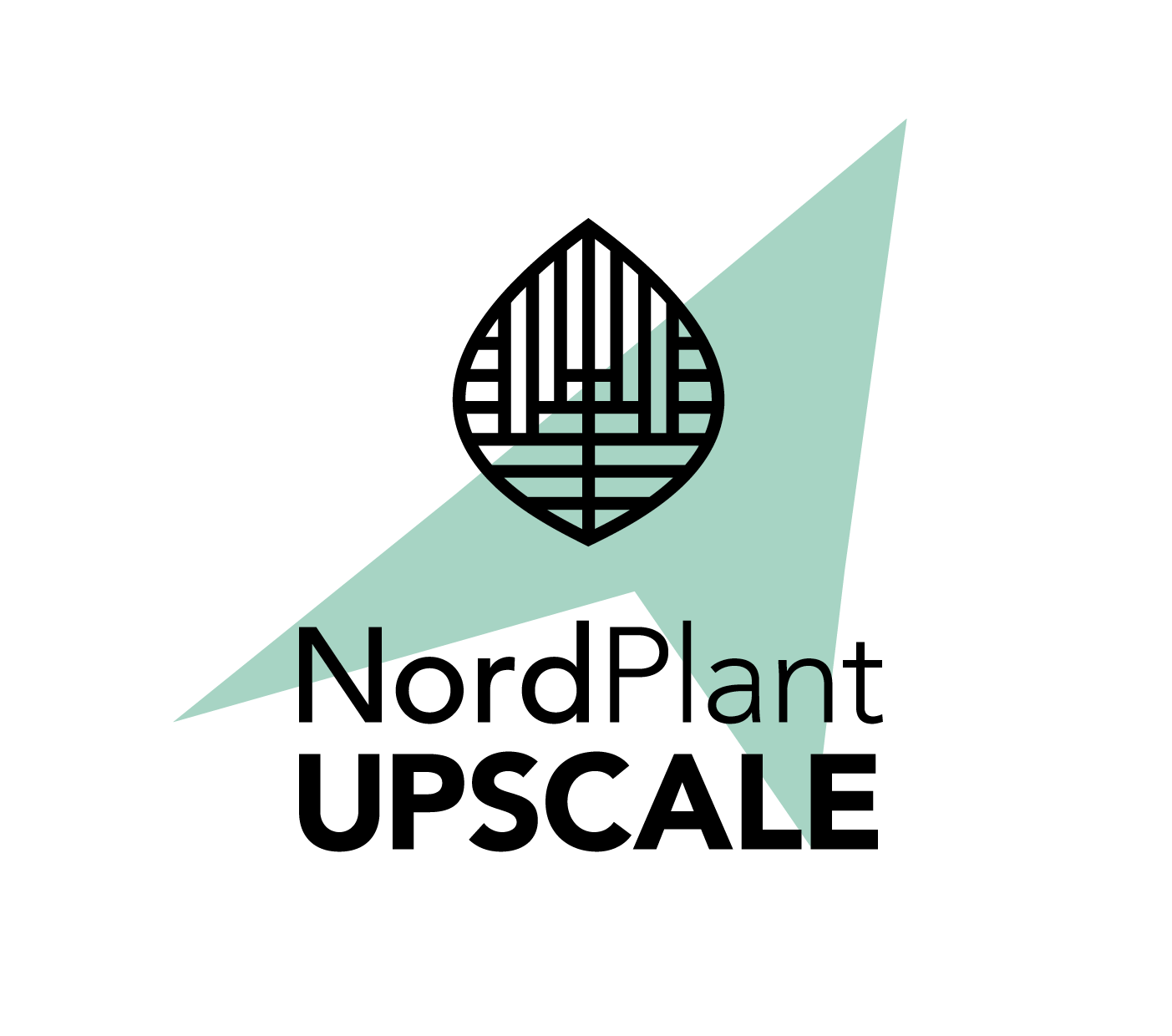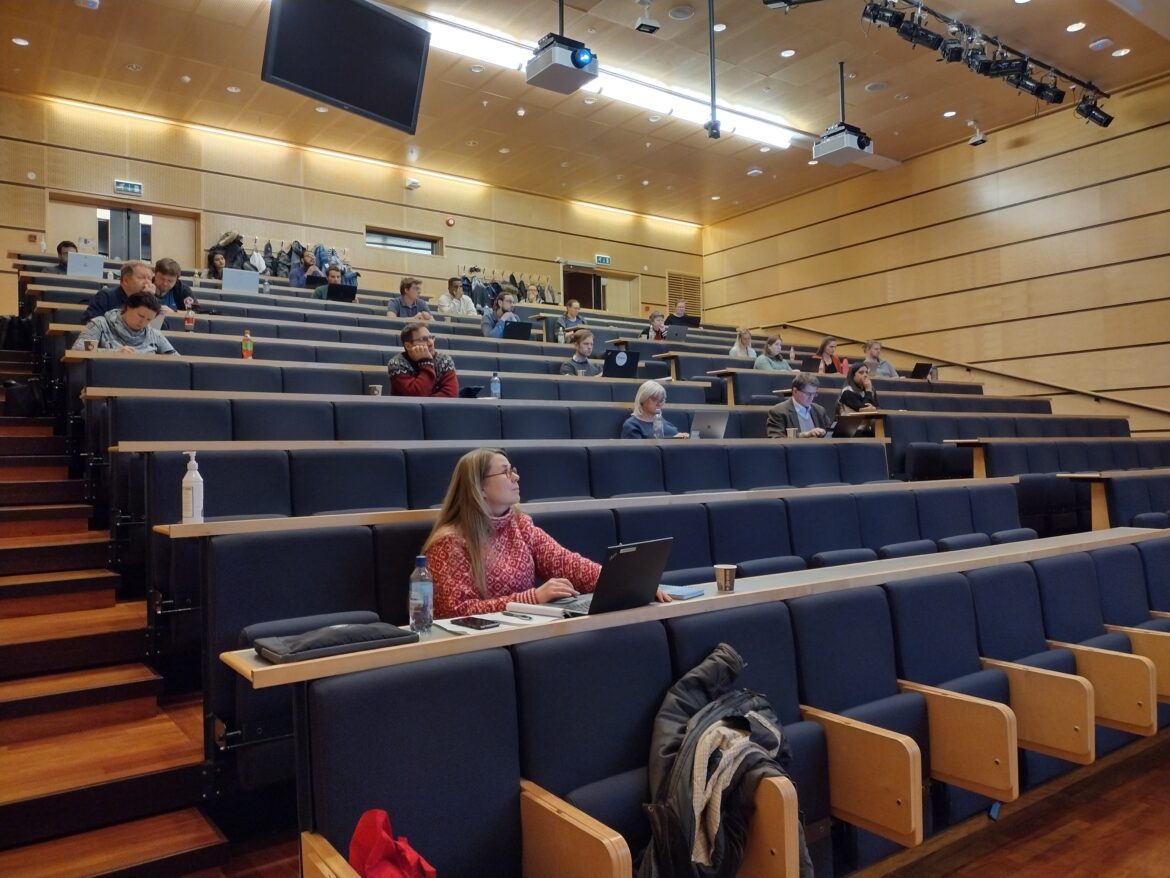This year’s NordPlant annual meeting started with a keynote lecture from Magnus Nordborg (Gregor Mendel Institute). His research has revolved around plant ecotypes for a long time. In his talk he presented data from epigenetic studies showing that it is not easy to find a link between different types of methylations driving epigenetic effects and underlying functions – even if certain types of methylations display a geographical pattern in Arabidopsis ecotypes collected all over Europe.
An important part of the Arctic Carbon Storage from Biomes (ABSORB) project presented by Katja Karppinen (UiT) and Markku Keinänen (UEF) is to collect various phenotyping data to establish the biomass of algae populations in the arctic region. This has direct consequences for the discussion of what capacity algae has for quenching elevated CO2 emissions and consequently mitigate climate change.
Ove Nilsson (SLU) presented the new tree phenotyping facility of the Umeå Plant Science Center (UPSC), which is based on the wiwam system developed at VIB Ghent. He showed examples of drought experiments in trees and the subsequent phenotyping in the platform, also stressing the possibility to retrieve –omics data and do cross-species systems biology to gain better understanding of different stress responses.
It is not easy to obtain good phenotyping data related to stomatal conductance and photosynthetic capacity, something which Eva Rosenqvist (University of Copenhagen) emphasized in her presentation. Still, she could show promising data on both heat stressed and drought stressed tomato. Eva Rosenqvist’s presentation was followed by a number of poster presentations presented as flash talks. Many of the posters can be found HERE.

Covid distanced meeting hall at UiT in Tromsø. Photo: Erik Alexandersson
In the panel discussion the participants Eva Rosenqvist (UCPH), Jørgen Mølmann (NIBIO), Markku Keinänen (UEF/UiT), Odd Arne Rognli (NMBU), Ove Nilsson (SLU) and Rick van de Zedde (WUR) discussed the meeting theme, “Successful Plant Modelling and Phenotyping for the Nordic Countries – What is Needed?” and gave their input and thoughts. The discussion was moderated by Erik Alexandersson (SLU). The first topic was whether there were any important specific traits to phenotype for in the Nordic region? Eva lifted that rather than any specific traits we need to take more traits into consideration at the same time both in research and for plant breeding, and that new phenotyping methods have an important role to fill. To meet climate change we cannot only set up experiments in controlled climates mimicking future climate predictions, but also need to repeat findings in real environments, but how to do that? To this end, Jörgen raised the importance of stress field phenotyping and that we need field facilities at different latitudes to make good comparisons and cater for different regions of the Nordics.
Odd Arne also stressed the importance of field phenotyping, and the importance of doing perturbations in these systems (e.g. with the help of polytunnels). Furthermore, he saw the need for adopting new crops, like protein crops. He stressed that the Nordic countries in fact have a long tradition of climate adaptation with the light interaction already! Ove added to this that in forest research, controlled trials have a long tradition with an enormous amount data already available. For successful phenotyping it is important to find good assays to incorporate in high-throughput phenotyping systems. Disease resistance and incorporating it for genomic selection was an example of particular importance.
This led the discussion over to whether the appropriate facilities are available in the Nordic countries and if there are any specific additional needs, or if the capacity in the Nordic region needs to be increased. Markku was of the opinion that knowledge and expertise on optical methods is good, and that in fact also the instruments are there and that a lot statistical differences can be found, but what do these findings actually mean? We are still looking for the breakthrough finding to put phenotyping fully on the research agenda. Further advancement is need and this requires further training, also of faculty professors!
Another question was how to link academic research better with industry and the rest of the society. For example how can we engage more with breeders? Should researchers come to them or them to us? Probably somewhere on the path between! Rick emphasised this is an important point, and that we need to team up and trust other researchers’ knowledge, and not least realise that you have to engage with research where you feel you have very little insight.
Eva raised that there is currently a generation shift where there are very few plant physiologists around, but plenty with a molecular expertise. Odd Arne thought that we are indeed missing skills, and that we need to improve training and build stronger research networks to span over different subject areas. Engineers interested in the subject will be needed, for example.
Erik raised that we today have two Nordic initiatives around phenotyping, NordPlant as well as the 6P with Nordic Plant Phenotyping Network (NPPN) that probably both are running into the last two years in 2022, and wondered if we need to keep the momentum going, and in that case how? Markku was of the clear opinion that we need a Nordic community, since we have unique geography for plant production. He was not fully sure how to structure it though, but that it should at least be an open community, which also link up to the industry. Rick gave a final remark that there are several funding opportunities right now and we are in an important research area, so there should be plenty of opportunities to strengthen the community also in the Nordic countries.
The day was finalised by highlights from two NordPlant supported projects by post doc Chandana Pandey (University of Copenhagen) and PhD student Murilo Sandroni (SLU). Chandana presented her work taking a dual approach to studying powdery mildew-infected barley by both macroscopic and microscopic phenotyping. Murilo had employed two Nordic phenotyping facilities, the NaPPI and the PhenoLab, to study the effect of induced resistance on potato phenotype profiles, by triggering it with elicitors.

The day after the closure of the meeting Northern lights could be seen around the corner! Photo: Erik Alexandersson
On the second day Jörgen Mölmann (NIBIO) lifted the effects of the Nordic light conditions with its short seasons but long day lengths on agriculture. The growing region north of the Arctic circle is not negligible. For example, 10% of the table potatoes for the Norwegian market is produced there. He pointed at differences in light composition with longer periods richer in far-red parts of the light spectra. In his research, he had looked at the effect of light and the absence of complete darkness on yield also targeting a number of genes involved in circadian rhythms. The arctic conditions can also affect taste and the production of secondary metabolites in planta.
The next speaker was David Percival (Dalhousie University) who presented how he used RGB imaging and LIDAR mounted on UAVs to create both disease and 3D maps of wild blueberry fields. This allows him to identify specific features bot of the field (i.e. microclimate and topography) and of the crop (i.e. nutritional and disease status and population status). This in turn can be used to guide the application of plant nutrients as well as pesticides.
Junfeng Gao (Lincoln University) presented how he had employed RGB and hyperspectral imaging to detect and quantify late blight in potato. Importantly, he had retrieved these in field settings, employing computer vision in natural conditions.
Susanna Simovaara presented her work on wild cranberries and how she (among other things) had used the “small” phenotype platform at NaPPI to monitor the anthocyanin content of berries. She then compared these values to those obtained by analytic methods since a non-invasive phenotyping using imaging would save considerable time. Her focus is how the Nordic light influenced the composition in the berries.
To strengthen our connection to European initiatives, and to get a much needed external view of the Nordic phenotyping community, we had invited Rick van de Zedde (WUR) who is the project manager at the Netherlands Plant Eco-phenotyping Centre (NPEC) facilities. He presented on the six different modules in place in Utrecht and Wageningen. All six modules are producing data with major emphasis on the acquisition of data. Just as NordPlant, NPEC has employed the information system PHIS to store phenotyping data in a Miappe compatible way. His experience was that metadata questions from the users often come long after the experiment is finished. At that time it will often be too late to try to recap what the conditions were or if there had been any abnormalities during the experiment, unless the data was not recorded straight away in an appropriate manner. Furthermore, he presented fascinating work on creating a “digital twin” of an experiment by sensoring a real crop. He ended his presentation with a kind open offer to organise expert meetings and exchange personal through Erasmus or similar to increase the information flow in the community.


